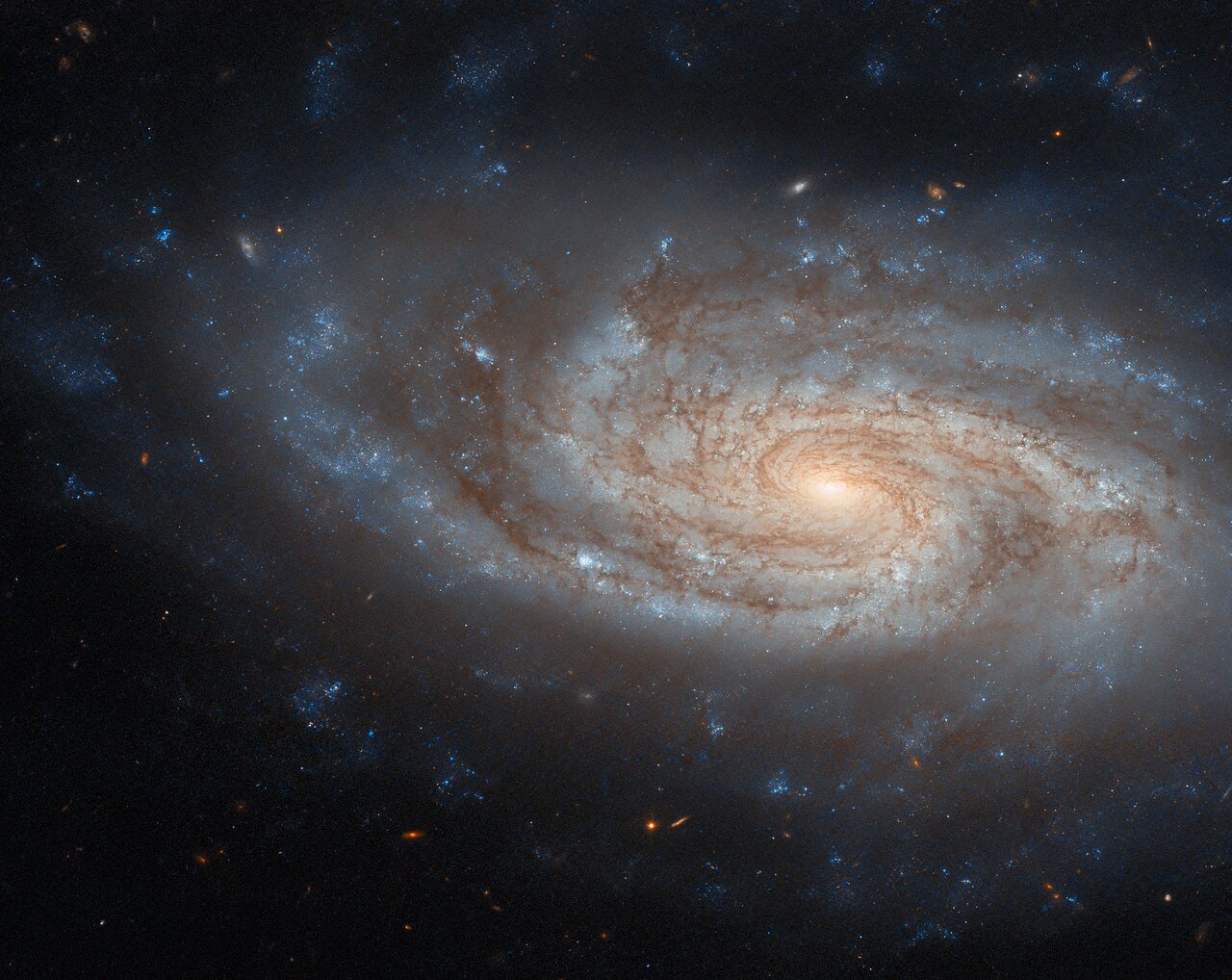Cosmos NGC 3430
In this week’s Hubble Picture of the Week we are treated to a wonderfully detailed snapshot of NGC 3430. A spiral galaxy, it lies 100 million light-years from Earth in the constellation Leo Minor. Several other galaxies are located relatively nearby to this one, just out of frame; one is close enough that gravitational interaction is driving some star formation in NGC 3430.
That NGC 3430 is such a fine example of a galactic spiral may be why it ended up as part of the sample that Edwin Hubble used to define his classification of galaxies. Namesake of the Hubble Space Telescope, in 1926 he authored a paper which classified some four hundred galaxies by their appearance — as either spiral, barred spiral, lenticular, elliptical or irregular. This straightforward typology proved immensely influential, and the modern, more detailed schemes that astronomers use today are still based on it. NGC 3430 itself is an SAc galaxy, a spiral lacking a central bar with open, clearly-defined arms.
At the time of Hubble’s paper, the study of galaxies in their own right was in its infancy. With the benefit of Henrietta Leavitt’s work on Cepheid variable stars, Hubble had only a couple of years before settled the debate about whether these ‘nebulae’, as they were called then, were situated within our galaxy or were distant and independent. He himself referred to ‘extragalactic nebulae’ in his paper, indicating that they lay beyond the Milky Way galaxy. Once it became clear that these distant objects were very different from actual nebulae, the favoured term for a while was the quite poetic ‘island universe’. While NGC 3430 may look as if it still deserves this moniker, today we simply call it and the objects like it a ‘galaxy’.
